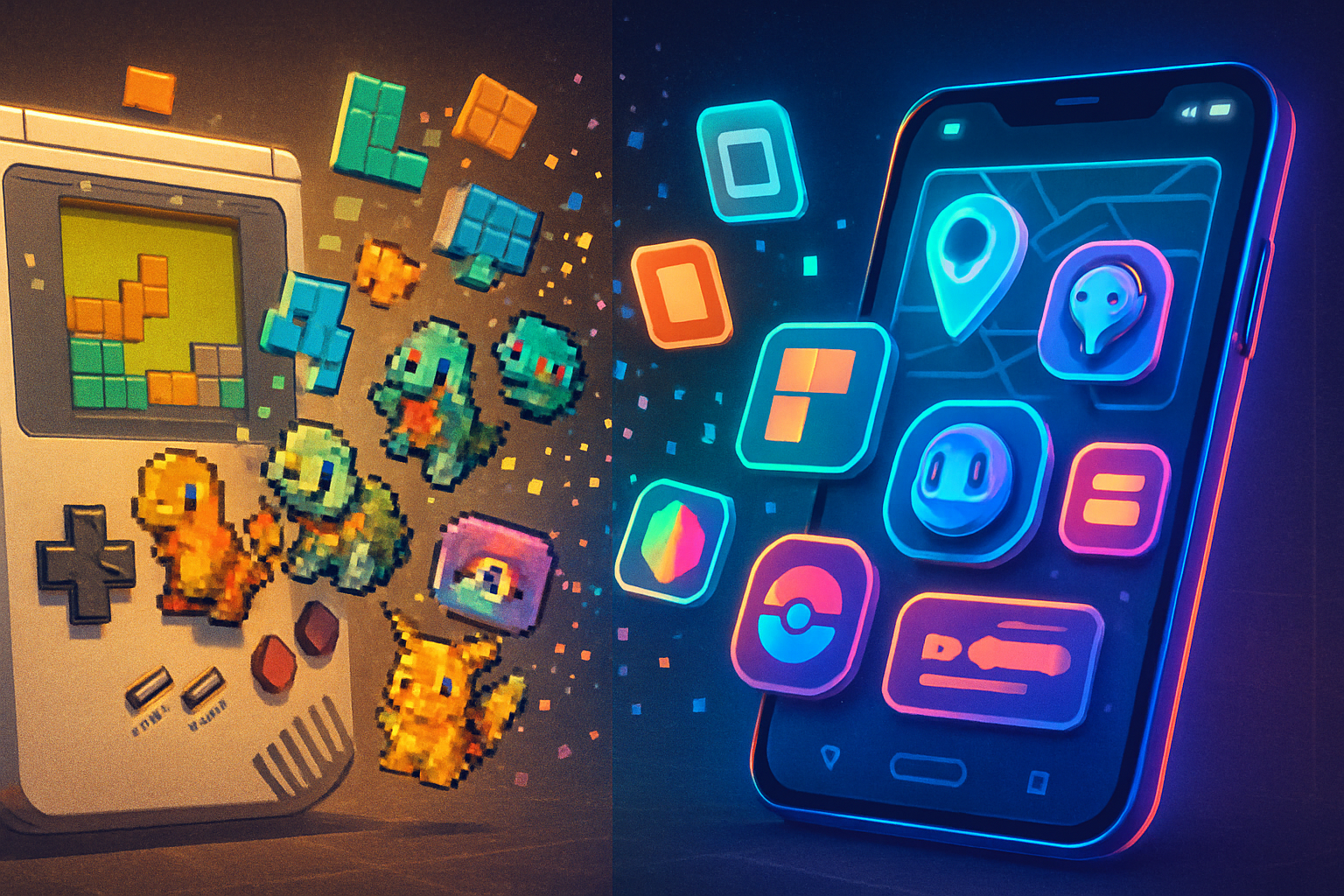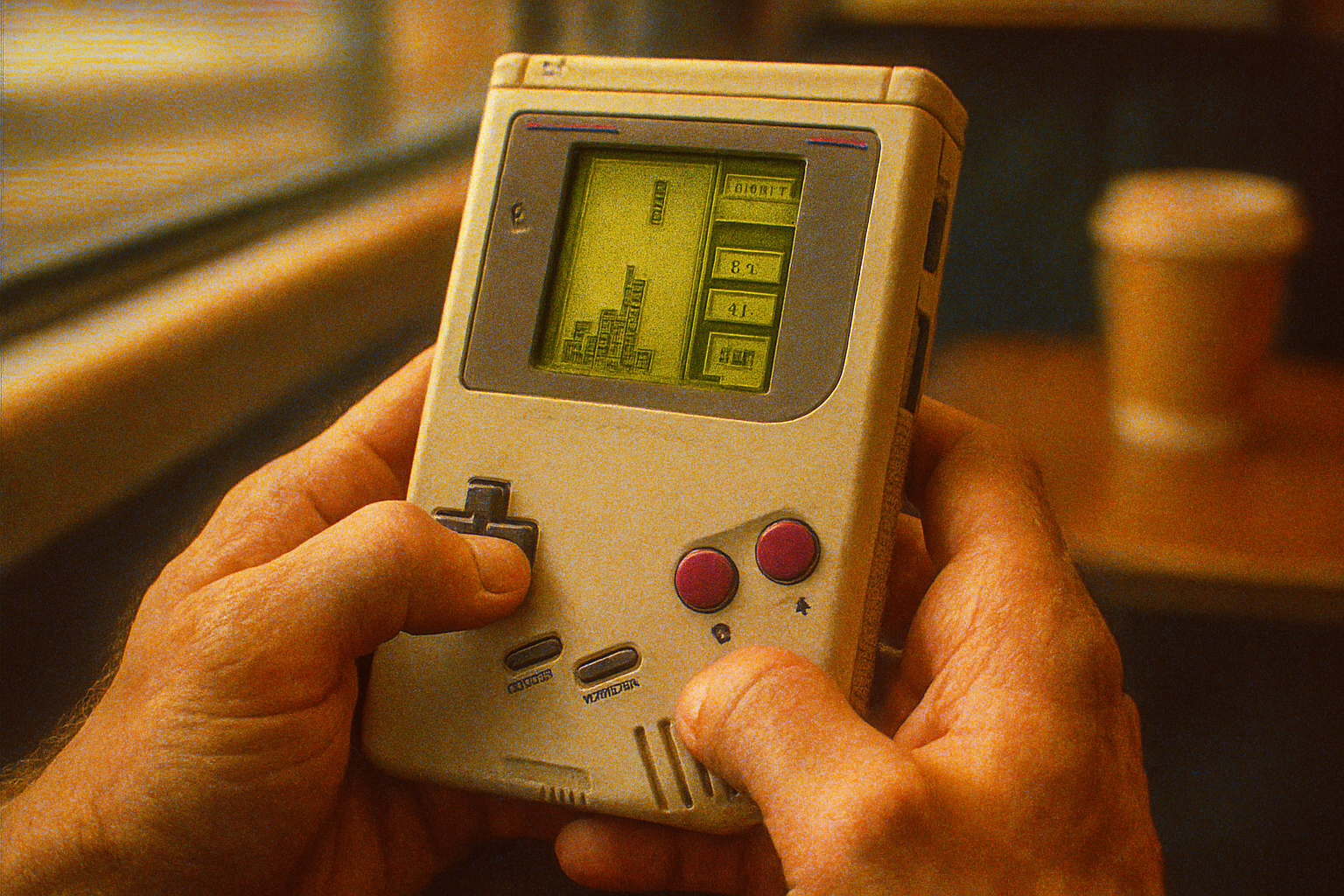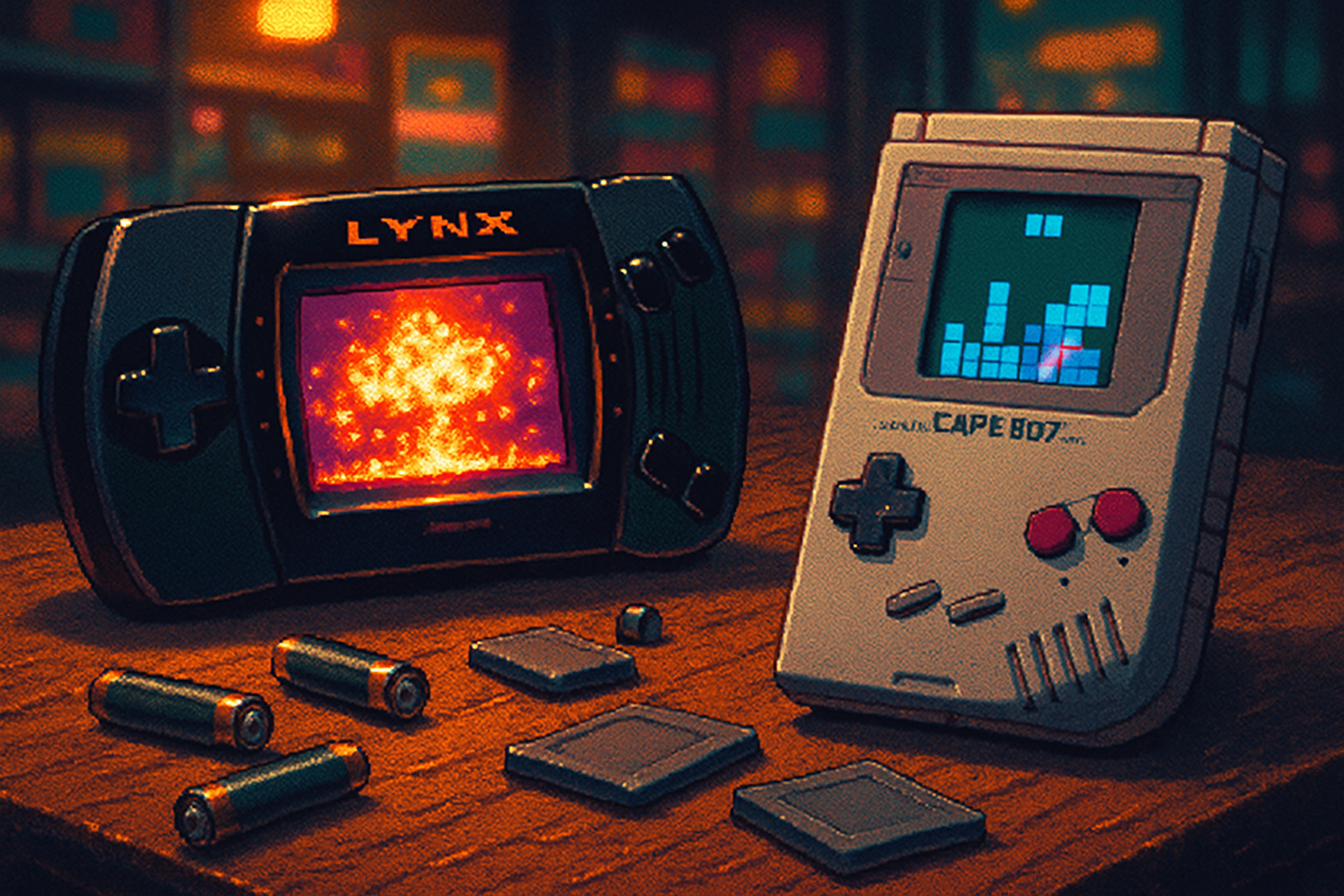· retrogaming · 6 min read
The Untold Legacy: How Game Boy Classics Influenced Modern Mobile Gaming
From battery-backed saves and short play sessions to collection loops and social trading, the Game Boy's design DNA lives on in modern mobile games. This article traces how classics like Tetris and Pokémon shaped the mechanics, UX and retention strategies that make mobile gaming what it is today.

A pocket revolution
When Nintendo launched the Game Boy in 1989, it wasn’t just putting games into people’s pockets - it was inventing constraints and patterns that would echo decades later in mobile gaming. The Game Boy’s simplest hits - think Tetris and Pokémon - distilled gameplay into short, repeatable loops, durable progression systems and social rituals that map remarkably well to what we expect from mobile titles today.
This article zooms in on the concrete mechanics, hardware features and design decisions from Game Boy classics that influenced the mobile gaming landscape.
Why the Game Boy mattered to design
The Game Boy forced designers to prioritize clarity, immediacy and replayability:
- Limited screen resolution and monochrome palettes demanded simple, readable UI and iconography.
- Cartridge-based hardware with battery-backed saves made persistent progression possible on a handheld for the first time at scale.
- Portability encouraged short play sessions and naturally interruptible experiences.
- Peripheral hardware (Link Cable, Game Boy Camera/Printer) introduced early social and UGC (user-generated content) dynamics.
See the Game Boy overview for technical context: Game Boy - Wikipedia.
Tetris: the blueprint for pick-up-and-play and endless loops
Tetris (already a global phenomenon before Game Boy, but famously portable on it) is an early example of a near-perfect mobile design pattern:
- Pick-up-and-play - immediate mechanics, no long tutorials, approachable for all ages.
- Short sessions - each game can last a minute or many - ideal for waiting-room play.
- Endless scoring loop - high-score chasing creates intrinsic replayability and social comparison.
- Minimal UI, focused feedback - every action has immediate, visible consequence.
Tetris on the Game Boy helped popularize the idea that a game can be deeply engaging while being physically small and technically simple. Modern puzzle games, daily challenges, and score-chasing leaderboards owe a lot to Tetris’ design mindset. (See: Tetris - Wikipedia).
Pokémon: collection loops, persistence, and social hooks
Pokémon Red and Blue (and later Gold and Silver) introduced or refined several features that presage core mobile mechanics:
- Collection loop - catch → raise → evolve → trade/battle. This loop is the ancestor of today’s collector-driven mobile games (including many gacha systems).
- Persistent progression - battery-backed saves let players develop long-term attachments to their teams and progress across many sessions (
- Social trading and battling - the Link Cable allowed direct player-to-player trading and battling, creating emergent social economies and social motivation to keep playing (
- Real-time systems - Gold and Silver introduced a real-time clock with day/night cycles and time-based events - an antecedent of many mobile daily timers and time-limited events that drive retention (
Niantic’s Pokémon GO is the most direct commercial descendant: capturing creatures in the real world, social meetups for raids, daily login bonuses and persistent progression - yet the DNA comes from the original Game Boy series. (See: Pokémon GO - Wikipedia).
Hardware features that shaped software expectations
Several physical Game Boy innovations directly influenced what mobile games would later consider essential:
- Battery-backed saves - Persistence across sessions changed design from ephemeral arcade loops to long-term progression systems. The ability to save progress on a handheld normalized the idea of continuing a game over days, weeks or months.
- Link Cable - Local multiplayer, trading and social negotiation became embedded design goals instead of rare features.
- Internal clock (Gold/Silver) - Time-based events and limited-time content work exceptionally well on mobile because players can be coaxed back daily.
- Game Boy Camera/Printer - Early experiments in player creativity and sharing foreshadowed mobile UGC and social sharing features.
For background: Game Boy Camera - Wikipedia.
UX lessons: constraints that improved clarity
Designers working for Game Boy learned to communicate a lot with very little. That aesthetic and pragmatic discipline translates directly to mobile UX:
- Economy of information - Mobile screens are small; the Game Boy’s low-res UI taught designers to strip interfaces to essentials.
- Readability under varied conditions - Game Boy games had to be playable under different lighting and while moving - mobile designers still must handle similar variability.
- Controls as affordances - Simple control schemes (four-directional inputs, two buttons) produce focused mechanics, which mobile translates into one-touch controls and gesture-based simplifications.
These lessons help explain why so many successful mobile games are minimal on control complexity but deep in systems (e.g., one-thumb infinite runners, single-tap puzzlers, or auto-combat RPGs).
Monetization and retention: early psychological hooks
Game Boy classics didn’t use microtransactions, but they pioneered retention mechanics that modern monetization layers exploit:
- Collection and completionism (Pokémon) - drives long-term engagement, which monetized systems later capitalize on.
- Daily rhythms and scarcity (Gold/Silver RTC) - created habits and routines - foundations for gacha/limited-time offers.
- Social pressure (Link Cable trades, local competitions) - created desire to participate and improve, the same social hooks mobile games use with leaderboards, clans and PvP.
Mobile developers layered new business models (IAPs, ads, subscription) atop these behavioral patterns, but the retention psychology was already present in Game Boy-era designs.
Case studies: direct lineage in modern titles
- Pokémon GO - Obvious lineage in creature-catching loop, AR-facilitated exploration and social events.
- Match-3 and puzzlers (Candy Crush et al.) - While match-3 mechanics predate Game Boy, the pick-up-and-play, level-based structure and short-session play popularized by portable gaming informed mobile puzzle pacing.
- Monster-collect gacha games - Systems resembling Pokémon’s catch/raise/evolve loop appear in many mobile titles where randomized acquisition and leveling are central.
- Competitive arcade-style mobile games - The score-chase and leaderboard culture descend from Tetris’ competitive scoring.
What modern designers can still learn from Game Boy classics
- Prioritize a single, elegant loop - Constraints force clarity; pick one strong action and build around it.
- Design for interruptions - Make progression resilient to short, frequent sessions.
- Leverage social primitives - Trading, local competition, and social rituals build lasting engagement.
- Use constraints to focus creativity - Less screen real estate and fewer controls can lead to richer systemic depth.
Indie developers in particular benefit from this mindset: small teams can produce portable, addictive experiences that scale well on mobile by applying disciplined constraint-driven design.
Conclusion: more than nostalgia - a design lineage
The Game Boy wasn’t simply a retro device to be admired by collectors. Its constraints, hardware features and design successes created patterns - pick-up-and-play loops, persistent progression, social exchange and time-based hooks - that are central to mobile gaming today. When you swipe to catch, tap to match, or check daily quests on your phone, you’re often replaying design choices first refined on an unassuming grey handheld.
References
- Game Boy - https://en.wikipedia.org/wiki/Game_Boy
- Tetris - https://en.wikipedia.org/wiki/Tetris
- Pokémon Red and Blue - https://en.wikipedia.org/wiki/Pok%C3%A9mon_Red_and_Blue
- Pokémon Gold and Silver - https://en.wikipedia.org/wiki/Pok%C3%A9mon_Gold_and_Silver
- Game Boy Link Cable - https://en.wikipedia.org/wiki/Game_Boy_Link_Cable
- Game Boy Camera - https://en.wikipedia.org/wiki/Game_Boy_Camera
- Pokémon GO - https://en.wikipedia.org/wiki/Pok%C3%A9mon_Go

